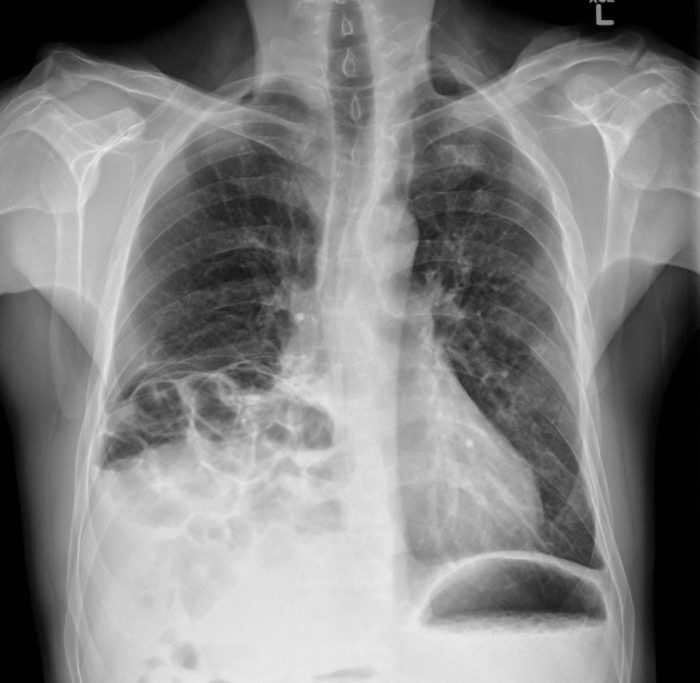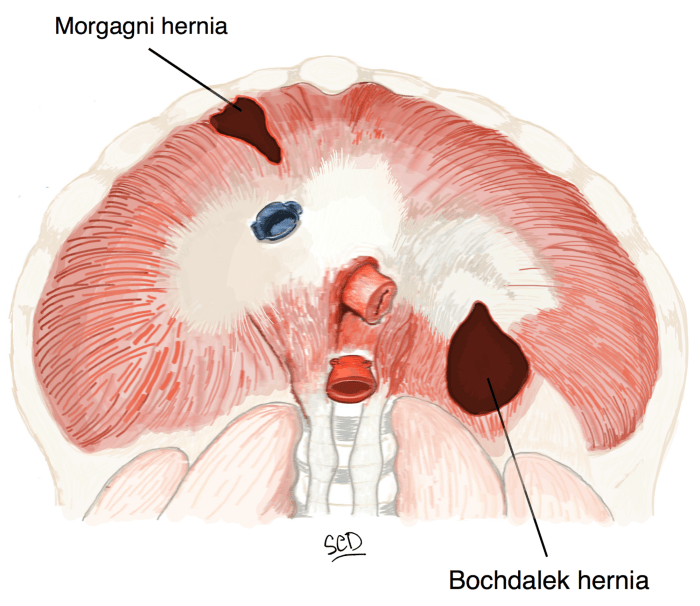The intricacies of CPT code diaphragmatic hernia repair unfold in this comprehensive guide, providing a roadmap for healthcare professionals to navigate the complexities of this surgical procedure. Delving into the nature, types, and coding guidelines, this exploration unravels the essential elements of diaphragmatic hernia repair, empowering providers with the knowledge to ensure accurate documentation and optimal patient care.
As we embark on this journey, we will delve into the intricacies of diaphragmatic hernia repair, unraveling the different types of repairs, their indications and outcomes, and the comprehensive list of CPT codes used for billing purposes. Furthermore, we will explore the essential documentation requirements and coding guidelines to ensure accurate and compliant billing practices.
1. Definition of Diaphragmatic Hernia Repair
A diaphragmatic hernia is a defect in the diaphragm, the muscle that separates the chest cavity from the abdominal cavity. This defect allows abdominal organs, such as the stomach or intestines, to protrude into the chest cavity. Diaphragmatic hernias can be congenital (present at birth) or acquired (develop later in life).
Acquired diaphragmatic hernias are often caused by trauma, such as a car accident or a fall.
The surgical procedure for repairing a diaphragmatic hernia involves making an incision in the abdomen or chest and pulling the herniated organs back into the abdominal cavity. The diaphragm is then repaired by suturing the defect closed.
2. Types of Diaphragmatic Hernia Repair: Cpt Code Diaphragmatic Hernia Repair
There are two main types of diaphragmatic hernia repair: open repair and laparoscopic repair.
- Open repairis the traditional method of repairing a diaphragmatic hernia. It involves making a large incision in the abdomen or chest and directly visualizing the hernia defect. Open repair is generally preferred for large or complex hernias.
- Laparoscopic repairis a minimally invasive technique that involves making several small incisions in the abdomen and inserting a laparoscope (a thin, lighted tube) into the abdominal cavity. The laparoscope is used to visualize the hernia defect and repair it with sutures or staples.
Laparoscopic repair is generally preferred for small or uncomplicated hernias.
The choice of repair technique depends on the size and location of the hernia, as well as the patient’s overall health.
3. CPT Codes for Diaphragmatic Hernia Repair

The following CPT codes are used for diaphragmatic hernia repair:
- 49560– Repair of diaphragmatic hernia, abdominal approach
- 49561– Repair of diaphragmatic hernia, thoracic approach
- 49562– Repair of diaphragmatic hernia, laparoscopic approach
The appropriate CPT code is determined by the approach used to repair the hernia.
4. Documentation Guidelines for Diaphragmatic Hernia Repair

The following documentation is required for diaphragmatic hernia repair:
- A preoperative diagnosis of diaphragmatic hernia
- A description of the surgical procedure, including the approach used
- A description of the hernia defect
- A description of the repair technique
- A list of the materials used
- A postoperative diagnosis
5. Reimbursement Considerations for Diaphragmatic Hernia Repair

The reimbursement rate for diaphragmatic hernia repair varies depending on the insurance plan. The following factors can affect reimbursement:
- The type of repair performed
- The size and location of the hernia
- The patient’s overall health
- The geographic location of the hospital
6. Patient Education for Diaphragmatic Hernia Repair
Patients should be educated about the following before undergoing diaphragmatic hernia repair:
- The symptoms of a diaphragmatic hernia
- The risks and benefits of surgery
- The expected recovery time
- The importance of follow-up care
7. Research and Advancements in Diaphragmatic Hernia Repair
There is ongoing research into new and improved techniques for diaphragmatic hernia repair. These techniques include the use of robotics, laparoscopy, and other minimally invasive approaches.
Robotic-assisted diaphragmatic hernia repair is a minimally invasive technique that uses a robotic arm to assist the surgeon in performing the repair. This technique offers several advantages over traditional open repair, including reduced pain, scarring, and recovery time.
Laparoscopic diaphragmatic hernia repair is another minimally invasive technique that uses a laparoscope to visualize and repair the hernia defect. Laparoscopic repair is generally preferred for small or uncomplicated hernias.
General Inquiries
What are the different types of diaphragmatic hernia repairs?
There are various types of diaphragmatic hernia repairs, including laparoscopic repair, open repair, and robotic-assisted repair.
What are the indications for diaphragmatic hernia repair?
Diaphragmatic hernia repair is indicated when a diaphragmatic hernia is present, causing symptoms such as shortness of breath, chest pain, or abdominal pain.
What are the CPT codes for diaphragmatic hernia repair?
The CPT codes for diaphragmatic hernia repair vary depending on the type of repair performed. Common CPT codes include 39560, 39561, and 39562.